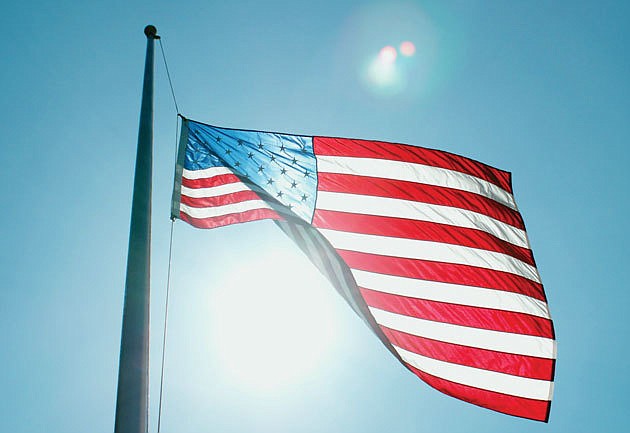- April 16, 2024
-
-
Loading

Loading

By Allan Gehring | Guest contributor
On the simplest level, our flag is a masterpiece of graphic design. The stars, stripes and colors all have symbolic meanings, and the flag as a whole is one of the best known icons on the planet. Although the flag may mean different things to different people, “Old Glory” evokes deep emotions in this old man when paired with our national anthem before military and sports events.
The well-known picture of U.S. Marines raising our star-spangled banner over Mount Suribachi on Iwo Jima quickly comes to mind, and that reminds me of the hundreds of battles and thousands of servicemen and women — mostly men — who have given their lives for our country. Then the image of military officers presenting neatly folded flags to survivors of servicemen and servicewomen killed in action evokes the most profound sense of grief. It is sad to think that the largest football stadium in our country could not seat as many people as the number of people who have died for our country. For that reason alone, the flag deserves to be treated with respect and dignity.
Since many American flags are displayed on Longboat Key, it would be nice if their owners would pay as much attention to the way they raise and lower the flag as military people do, particularly when the president or governor orders flags to be flown at half-mast. Webster’s Ninth New Collegiate Dictionary defines “half-mast” as a point some distance but not necessarily halfway down from the top of a mast. This definition allows for hanging the flag roughly the width of the flag below the top of the mast, and I think that looks much more dignified than hanging the flag half way down a pole as is often done on Longboat Key.
Meanwhile, I pledged allegiance to the flag of the United States and to the republic for which it stands at least a thousand times in grades K-12, but I never really thought about it until I agreed to write this op-ed. On closer examination, the pledge is actually two pledges; one to the flag and one to the republic for which it stands. The additional phrase about “liberty and justice” should be acceptable to anyone including dissidents because they want freedom to express their thoughts even more than the rest of us. The “under God” clause, however, was not well advised (the phrase was added in 1954) because there are many solid citizens in this country who are atheists or agnostics and they should not have to imply that they believe in God if they do not.
In this age when the Constitution can be interpreted as liberally as a Rorschack ink blot, our Pledge of Allegiance to the flag of the United States should not imply a litmus test for religious belief.
Allan Gehring is a Vietnam veteran and a Longboat Key resident.